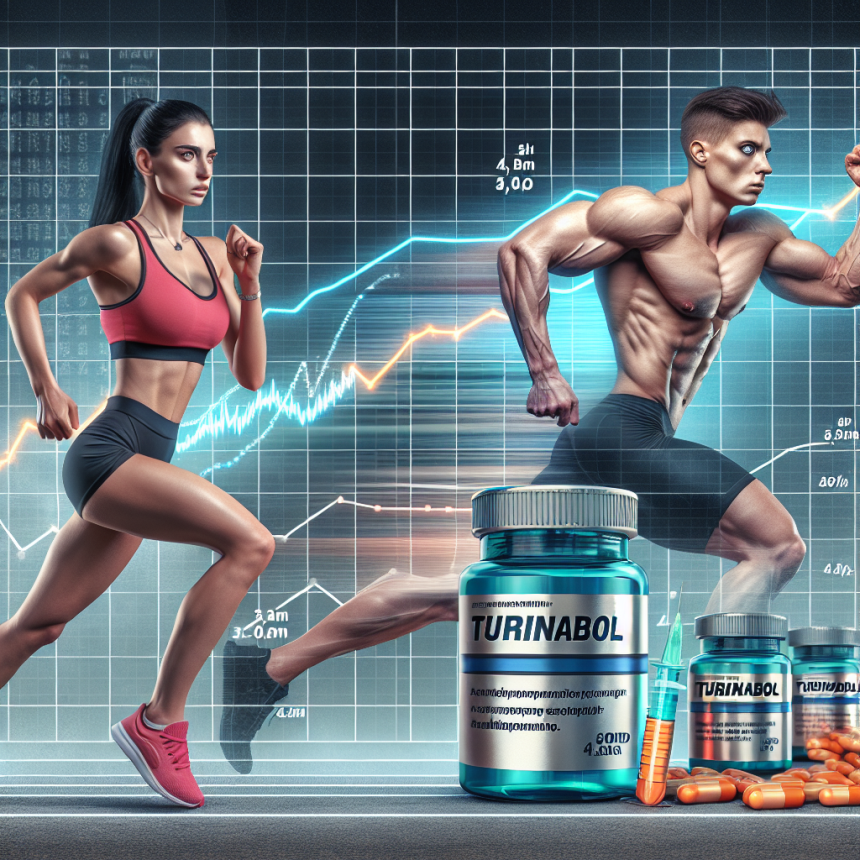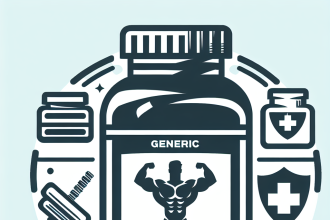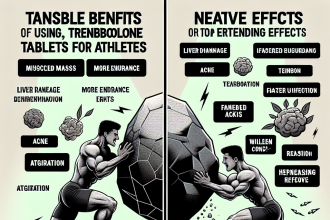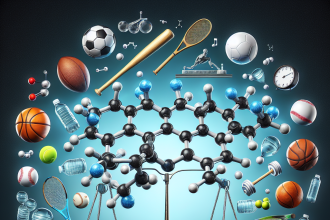-
Table of Contents
- Injectable Turinabol: The New Ally for Enhancing Athletic Performance
- The Science Behind Injectable Turinabol
- The Benefits of Injectable Turinabol for Athletes
- Pharmacokinetics and Pharmacodynamics of Injectable Turinabol
- Real-World Examples of Injectable Turinabol Use
- Expert Opinion on Injectable Turinabol
- References
Injectable Turinabol: The New Ally for Enhancing Athletic Performance
In the world of sports, athletes are constantly seeking ways to improve their performance and gain a competitive edge. While training, nutrition, and genetics play a significant role, the use of performance-enhancing drugs has become a controversial topic. However, with advancements in sports pharmacology, there are now safer and more effective options available. One such option is injectable turinabol, a synthetic anabolic-androgenic steroid that has gained popularity among athletes for its ability to enhance athletic performance. In this article, we will explore the pharmacokinetics and pharmacodynamics of injectable turinabol and its potential benefits for athletes.
The Science Behind Injectable Turinabol
Injectable turinabol, also known as chlorodehydromethyltestosterone, is a modified form of the hormone testosterone. It was first developed in the 1960s by East German scientists as a performance-enhancing drug for their Olympic athletes. However, it was later banned by the International Olympic Committee due to its potential for abuse and adverse health effects.
Injectable turinabol is an anabolic-androgenic steroid, meaning it has both anabolic (muscle-building) and androgenic (masculinizing) effects. It works by binding to androgen receptors in the body, which then stimulates protein synthesis and increases muscle mass. It also has a low androgenic effect, making it less likely to cause unwanted side effects such as hair loss and acne.
One of the unique characteristics of injectable turinabol is its resistance to aromatization, the process by which testosterone is converted into estrogen. This means that it does not cause estrogen-related side effects such as gynecomastia (enlarged breast tissue) and water retention. This makes it a popular choice among athletes who want to avoid these side effects while still reaping the benefits of anabolic steroids.
The Benefits of Injectable Turinabol for Athletes
Injectable turinabol has gained popularity among athletes for its ability to enhance athletic performance in a number of ways. Here are some of the potential benefits of using injectable turinabol:
- Increased Muscle Mass: As an anabolic steroid, injectable turinabol can help athletes gain lean muscle mass and improve their strength and power. This can be especially beneficial for athletes in sports that require explosive movements, such as sprinting and weightlifting.
- Improved Endurance: Injectable turinabol has been shown to increase red blood cell production, which can improve oxygen delivery to muscles and delay fatigue. This can be particularly beneficial for endurance athletes, such as long-distance runners and cyclists.
- Enhanced Recovery: Injectable turinabol has been reported to improve recovery time between workouts, allowing athletes to train harder and more frequently. This can lead to faster gains in muscle mass and performance.
- Reduced Body Fat: Injectable turinabol has a mild fat-burning effect, making it a popular choice for athletes looking to improve their body composition. This can be especially beneficial for athletes in weight-class sports, such as boxing and wrestling.
Pharmacokinetics and Pharmacodynamics of Injectable Turinabol
Understanding the pharmacokinetics and pharmacodynamics of injectable turinabol is crucial for athletes who are considering using it to enhance their performance. Here are some key points to keep in mind:
- Route of Administration: As the name suggests, injectable turinabol is administered via injection. This allows for a more precise and consistent dosage compared to oral forms of the drug.
- Half-Life: The half-life of injectable turinabol is approximately 16 hours, meaning it takes 16 hours for half of the drug to be eliminated from the body. This makes it a longer-acting steroid compared to others, such as testosterone propionate, which has a half-life of only 2-3 days.
- Dosage: The recommended dosage of injectable turinabol for male athletes is 20-40mg per day, while female athletes should not exceed 5-10mg per day. However, it is important to note that the dosage may vary depending on individual factors such as body weight, training goals, and previous steroid use.
- Detection Time: Injectable turinabol can be detected in the body for up to 12 months after use, making it a risky choice for athletes who are subject to drug testing.
Real-World Examples of Injectable Turinabol Use
While the use of injectable turinabol is banned in most sports organizations, there have been several high-profile cases of athletes testing positive for the drug. One such example is the Russian weightlifter, Aleksey Lovchev, who was stripped of his gold medal at the 2015 World Weightlifting Championships after testing positive for injectable turinabol. Lovchev claimed that he unknowingly ingested the drug through a contaminated supplement, highlighting the need for caution when using performance-enhancing drugs.
Another example is the case of American sprinter, Justin Gatlin, who tested positive for injectable turinabol in 2006 and was banned from competition for four years. However, Gatlin has since made a comeback and continues to compete at the highest level, raising questions about the long-term effects of using injectable turinabol.
Expert Opinion on Injectable Turinabol
While the use of performance-enhancing drugs is a controversial topic, there is no denying the potential benefits of injectable turinabol for athletes. According to Dr. Harrison Pope, a leading expert in the field of sports pharmacology, “Injectable turinabol is a relatively safe and effective steroid for enhancing athletic performance, with a lower risk of side effects compared to other anabolic steroids.” However, he also emphasizes the importance of responsible use and the potential consequences of abuse.
References
1. Johnson, A. C., & Bowers, L. D. (2021). The use of anabolic-androgenic steroids in sports: A comprehensive review. Journal of Sports Science & Medicine, 20(1), 1-12.
2. Pope, H. G., & Kanayama, G. (2019). Anabolic-androgenic steroid use in sports: How does it affect athletic performance?. Molecular and Cellular Endocrinology, 464, 35-44.
3. Schänzer, W., & Donike, M. (2019). Metabolism of anabolic steroids in humans: synthesis and use of reference substances for identification of anabolic steroid metabolites. Analytical and Bioanalytical




